This post may contain affiliate links. Please read our disclosure policy.
Learn how to make this one of the world’s must-try popular foods in Southeast Asia. Asam laksa has an amazingly complex flavor of sour, spicy, sweet, umami all in one.
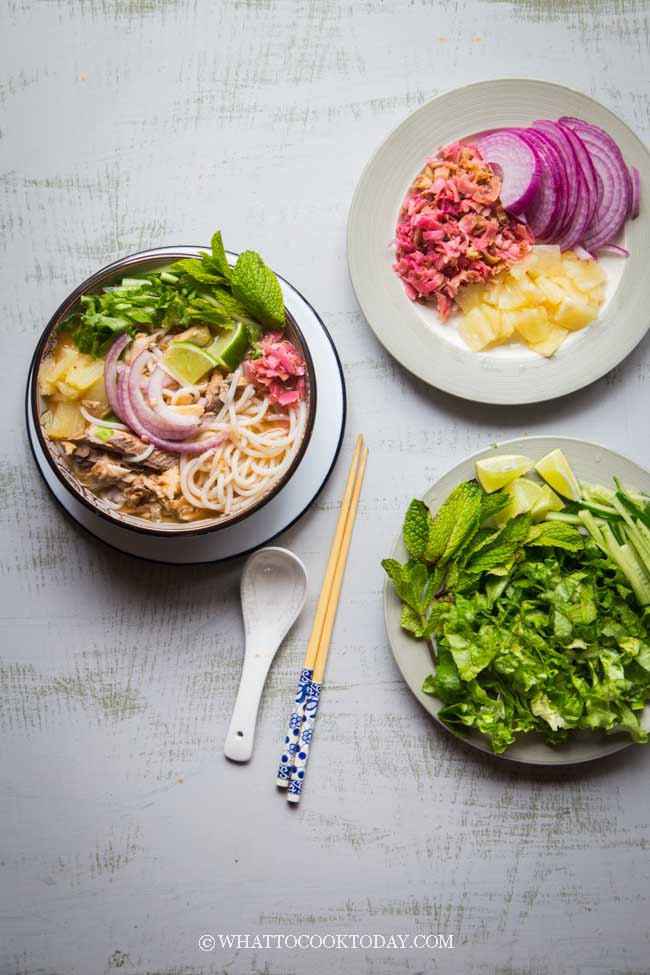
FAVORITE CHILDHOOD FOOD
My dad loved to bring us to Penang for culinary tour when we were kids. Penang is very close to my hometown, Medan and the Hokkien dialect that we speak is very similar too. I love all the yummy food Penang has to offer and not to mention at a very reasonable price. It’s ridiculous to even say that food in Medan is getting more darn expensive compared to Penang. Penang Char Kway Teow and this Asam Laksa are must-have food for me when we went to Penang.
We have Asam Laksa Medan too. I believe it’s an influence from Penang asam laksa. If I go back to my hometown, Medan for a visit, this asam laksa is one of the food on my to-eat list 🙂 There is this one very famous shop that sells this asam laksa and I’ve been eating it since I was a little girl.
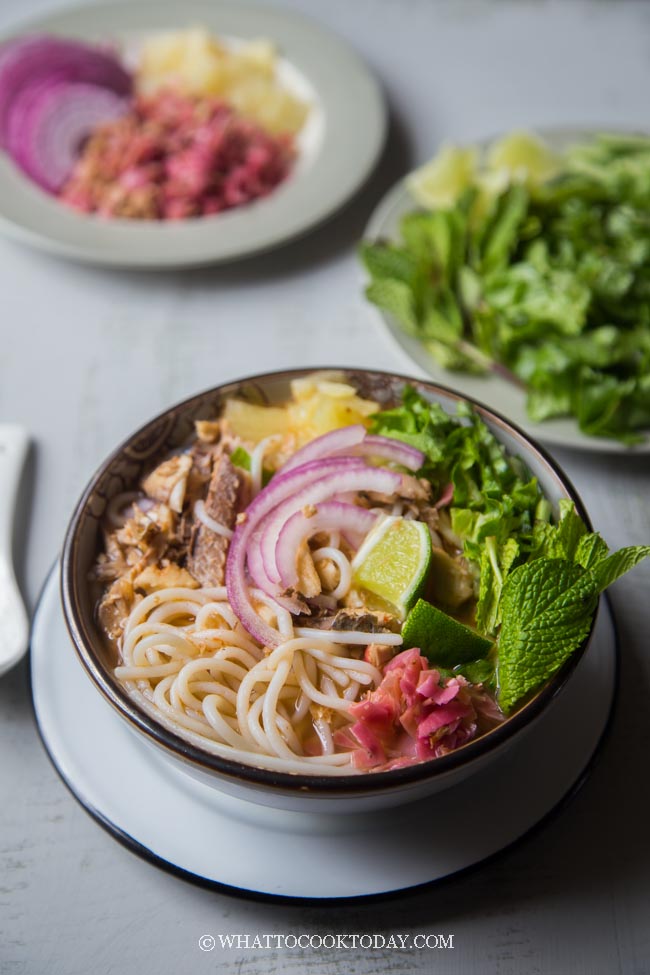
NYONYA ASAM LAKSA
Laksa is of Peranakan origin. There are so many different kinds of laksa. In the past, I’ve made Singapore Katong Laksa and also Laksa Ayam Betawi. The laksa collection is not complete without asam laksa. There are also many varieties of asam laksa in Malaysia alone. The one I’m familiar with is this Penang asam laksa. Asam laksa is a sweet and sour fish-based soup. Asam in Bahasa/Malay word means tamarind, which is commonly used to give this stock its sour flavor. Asam Gelugur/ Asam Keping (dried Tamarind Peel) is also added for extra tartness. Asam laksa has a very complex flavor of sweet, sour, spicy, and umami. Its distinct lemony umami-ish aroma comes from bunga kantan (torch ginger), the fish-based stock, shrimp paste, and a mixture of herbs like lemongrass. Asam laksa is usually served with thick round rice noodles, but thin rice noodles or a combination of both can be used too.
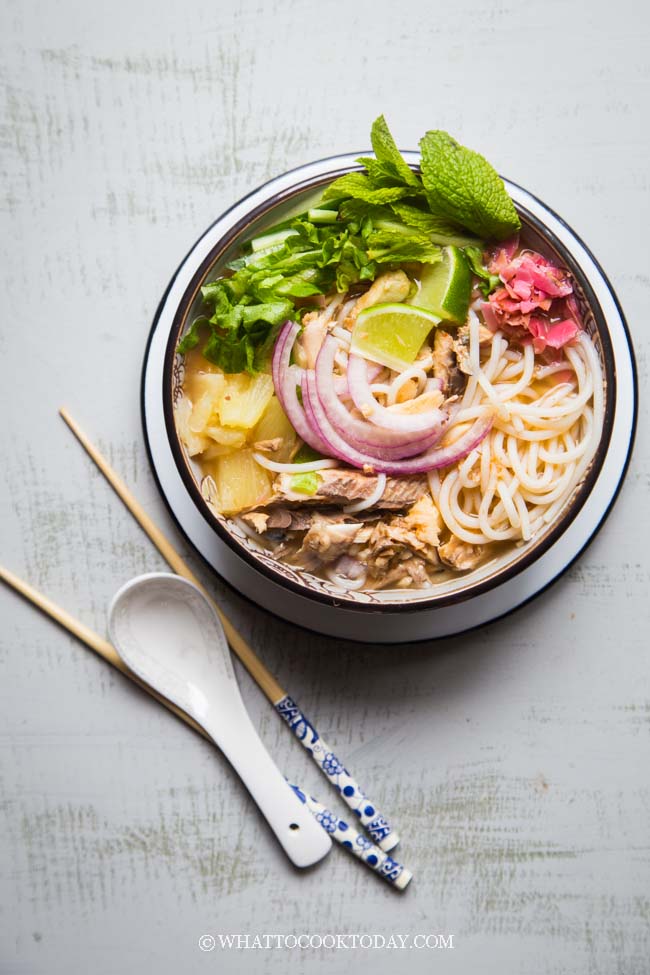
SPECIAL INGREDIENTS AND SUBSTITUTION
I won’t list all the ingredients used to make asam laksa, but just to highlight a few special ones and their substitution if any available.
1. MACKEREL
Usually ikan kembung (mackerel) is used to make asam laksa. If you can get fresh ones, great! I could only get frozen ones, which worked out great too. If you can’t find any at all, I’ve used canned sardines in tomato sauce in the past too. It’s not an ideal situation, but it works too.
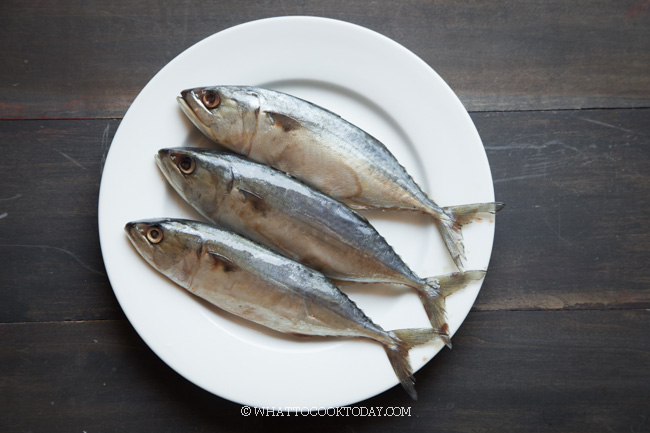
2. BUNGA KANTAN (TORCH GINGER BUD)
My mom says asam laksa is not the same without bunga kantan. It lends its very distinct flavor to the overall dish. My mom got me some dried version and a friend sent me frozen bunga kantan all the way from NY a while ago 🙂 I was lucky. Unfortunately, there’s no substitution for this. It has a very unique flavor that nothing I know is similar to it. You can simply omit if you can’t find any.
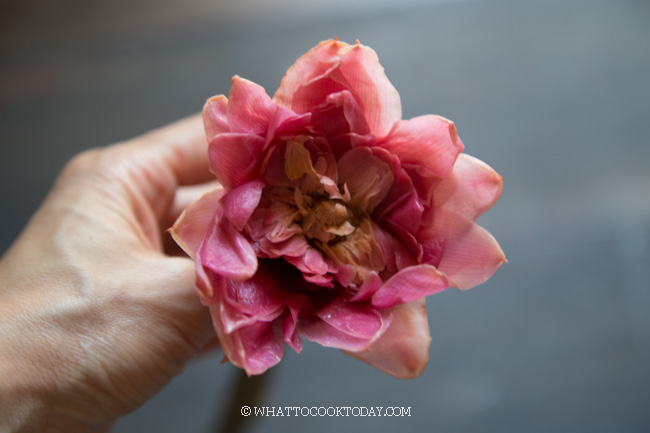
3. ASAM KEPING/ASAM GELUGUR (DRIED TAMARIND)
Asam keping/gelugur is made of kokum, a fruit of mangosteen family. It is known for its sourness. The fruit is dried and used in many cooking in Southeast Asia to lend its sourness to a dish. If you don’t have any, just add more tamarind paste and also some extra lime juice for extra tartness.
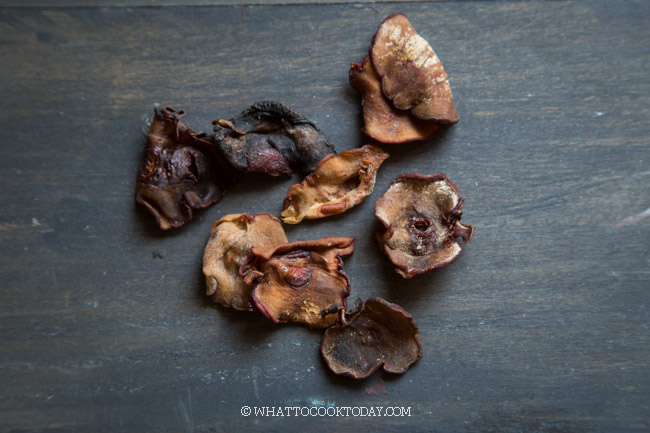
4. HAE KO (PETIS UDANG)
Hae ko has a strong pungent (umami) aroma because it is made with fermented shrimp paste but it is also sweet, thick, and has a texture of molasses. I have no luck finding petis udang here. In Medan, our asam laksa is not usually served with hae ko too.
5. SHRIMP PASTE (BELACAN/TERASI)
This is different from hae ko I mentioned above. Though both are sometimes called shrimp paste. This shrimp paste is salty and extremely pungent known as belacan in Malaysia and terasi in Indonesia. They are usually in dried block form. Toast it before using it to bring out its aroma further. You can simply substitute with Thai or Vietnamese “wet” shrimp paste, which is what I usually use because I can’t find belacan/terasi here.
6. RICE NOODLE
Fresh or dried thick rice noodle is usually used for asam laksa. I used the Vietnamese dried bun bo hue noodle, it is thick and round in size, very similar to the one used for asam laksa. You can also use Japanese udon or Vietnamese banh canh trong.
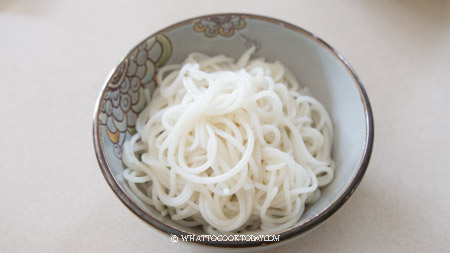
HOW TO MAKE PENANG ASAM LAKSA
1. PREPARE GROUND SPICES
Ground all the spices and herbs. Add a bit of water to help it going
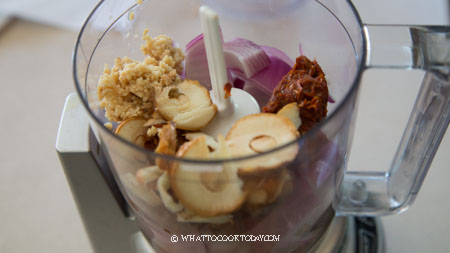
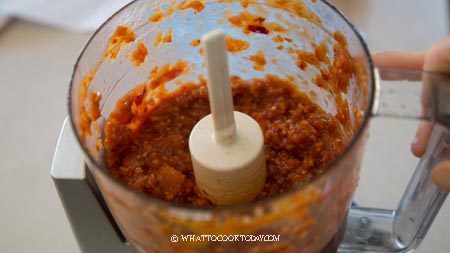
2. PREPARE SOUP BASE
Bring 10 cups of water to boil and lower to heat to medium-low to let the mackerel fish simmer for 10 minutes.
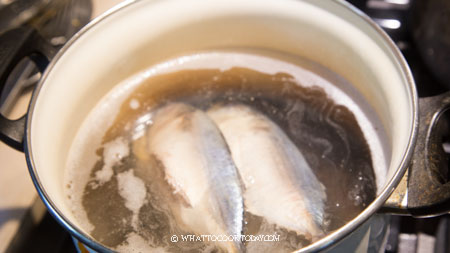
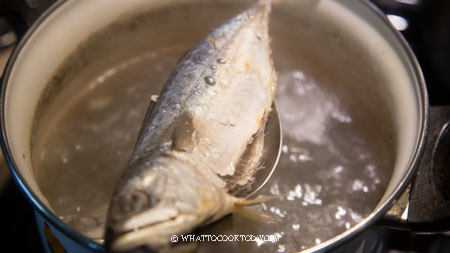
Once cool enough to handle, flake the fish meat and set aside, save the bones and head. If you are using canned mackerel, they are already cooked and you can skip this step
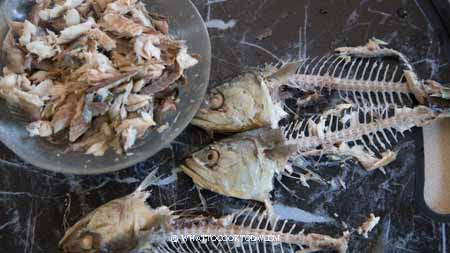
Add the ground spices and herbs, fish bones, and the rest of the ingredients for soup base.
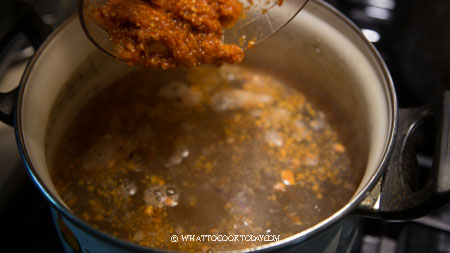
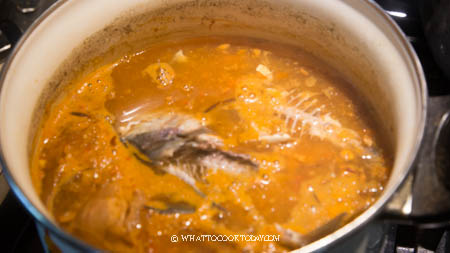
Bring it to a boil and then lower the heat, cover the pot with a lid and let it simmer for 30 minutes
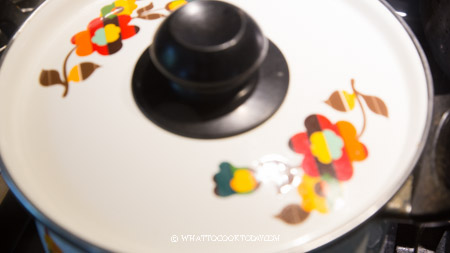
Turn off the heat and then strain the stock and discard all the solids
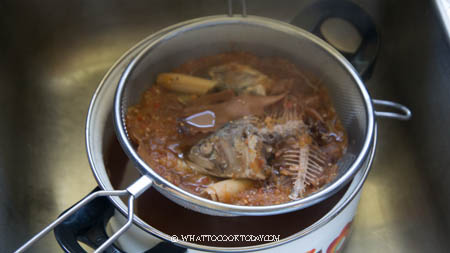
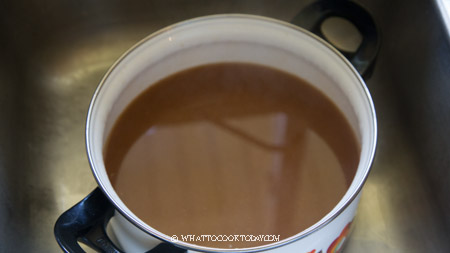
Stir the flaked fish back into the soup or canned sardines if using that. Season the soup base with seasonings and adjust to your taste. The soup should be sour, sweet, lightly spicy, and with just hint of savory. Add more sugar as needed
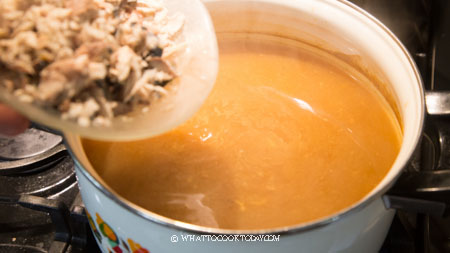
3. SERVE
Portion the cooked noodles, flaked fish into an individual serving bowl. Ladle the hot soup generously over the noodles.
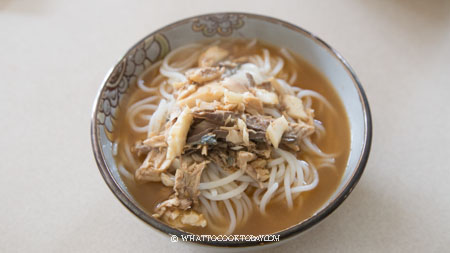
Top with sliced cucumber, sliced onion, pineapple chunks, mint leaves, shredded lettuce, finely chopped ginger flower. Squeeze some lime juice over. Serve with hae ko diluted with some water on the side (I didn’t use this because we don’t usually serve it with hae ko where I grew up)
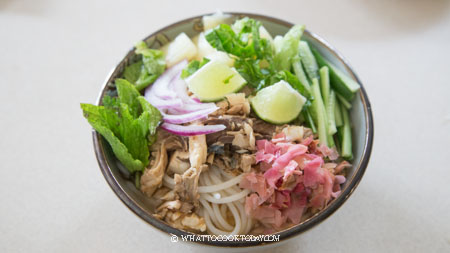
The list of ingredients may seem long, but it’s actually not as bad as it seems. If you use canned sardines, it’s even easier.
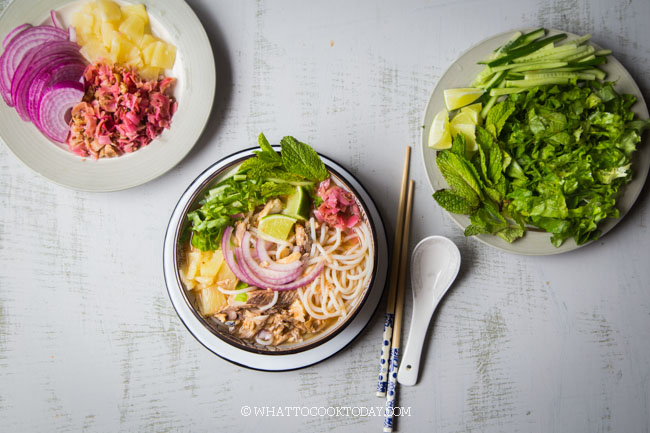
My husband said that asam laksa was like an explosion of taste. It sure keeps your taste buds busy with all the sensations! So complex, yet clean and distinct aroma. It’s so hard to explain that you have to try it yourself. I have to warn you though, asam laksa is not for the faint of heart 🙂 Perhaps if this is your first time trying Asian food, asam laksa is not a good one to start ha.ha…!
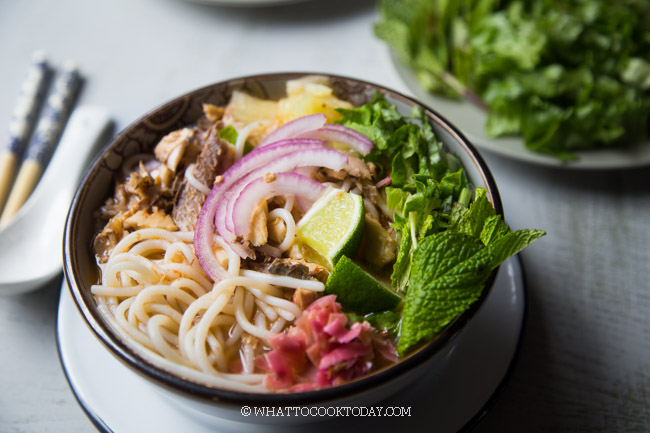
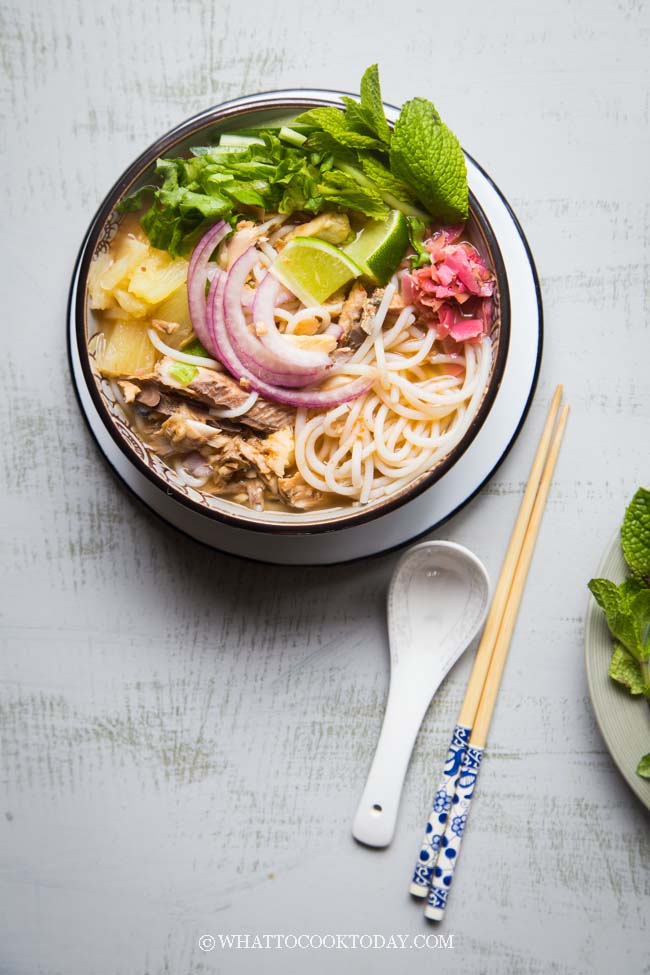
DID YOU MAKE THIS PENANG ASAM LAKSA RECIPE?
I love it when you guys snap a photo and tag to show me what you’ve made 🙂 Simply tag me @WhatToCookToday #WhatToCookToday on Instagram and I’ll be sure to stop by and take a peek for real!
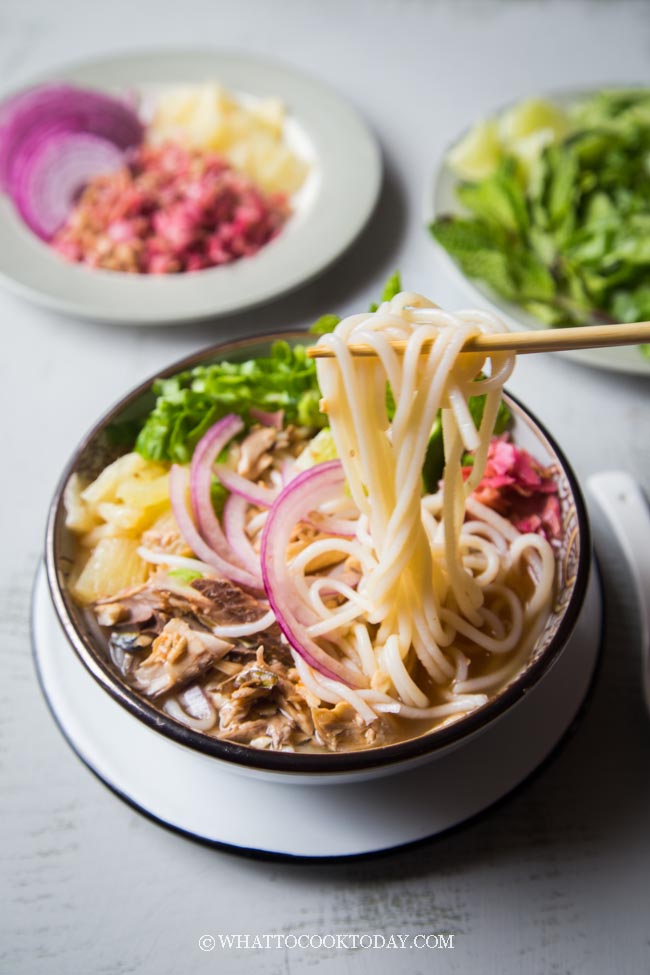
This post was originally published in 2016 and the recipe and photos have been improved in June 2020.
Penang Asam/Assam Laksa (Sour and Spicy Fish Noodle Soup)
Ingredients
- 500 gr mackerel fish gutted, or you can use canned sardines in tomato sauce
- 500 gr thick rice noodles cook according to instruction on the package
Soup base:
- 10 cups water
- 3 stalks lemongrass cut into half and bruise with heavy object
- 5 pieces asam gelugur / dried tamarind peel
- 50 gr tamarind paste
- 1 Tbsp shrimp paste
- 3 pieces dried bunga kencong if you use fresh you only need 1 fresh flower
Seasonings:
- 5 Tbsp sugar or more to taste
- Salt to taste
Spices and herbs to grind into paste:
- 100 gr red chilies fresh or dried (soak in warm water if using dried chilies)
- 150 gr shallots or use purple onion
- 25 gr garlic
- 25 gr galangal skinned
Serve with (the amount is just a guide, you can use more as you wish):
- 50 gr hae ko (petis udang) + 1 Tbsp hot water
- 1 large cucumber julienned
- 1 large purple onion thinly sliced
- 1 bunch fresh mint leaves
- 1 ginger flower finely chopped
- 100 gr pineapple chunks
- 1 head lettuce shredded
- 1 lime quartered
Instructions
Prepare the ground spices and herbs:
- Ground all the spices and herbs. Add a bit of water to help it going
Prepare the soup base:
- Bring 10 cups of water to boil and lower the heat to medium-low to let the mackerel fish simmer for 10 minutes. If the size of the mackerel is smaller, you may only need 6-8 minutes or until you can easily flake the meat with a fork, you are done cooking.
- Remove the fish from the liquid. Once cool enough to handle, flake the fish meat and set aside, save the bones and head. If you are using canned mackerel, they are already cooked and you can skip this step
- Add the ground spices and herbs, fish bones, and the rest of the ingredients for soup base. Bring it to a boil and then lower the heat, cover the pot with a lid and let it simmer for 30 minutes. Turn off the heat and then strain the stock and discard all the solids
- Stir the flaked fish back into the soup. Season the soup base with seasonings and adjust to your taste. The soup should be sour, sweet, lightly spicy, and with just hint of savory. Add more sugar as needed
Serving:
- Portion the cooked noodles, flaked fish into individual serving bowl. Ladle the hot soup generously over the noodles. Top with sliced cucumber, sliced onion, pineapple chunks, mint leaves, shredded lettuce, finely chopped ginger flower. Squeeze some lime juice over. Serve with hae ko diluted with some water on the side (I didn't use this because we don't usually serve it with hae ko where I grew up)


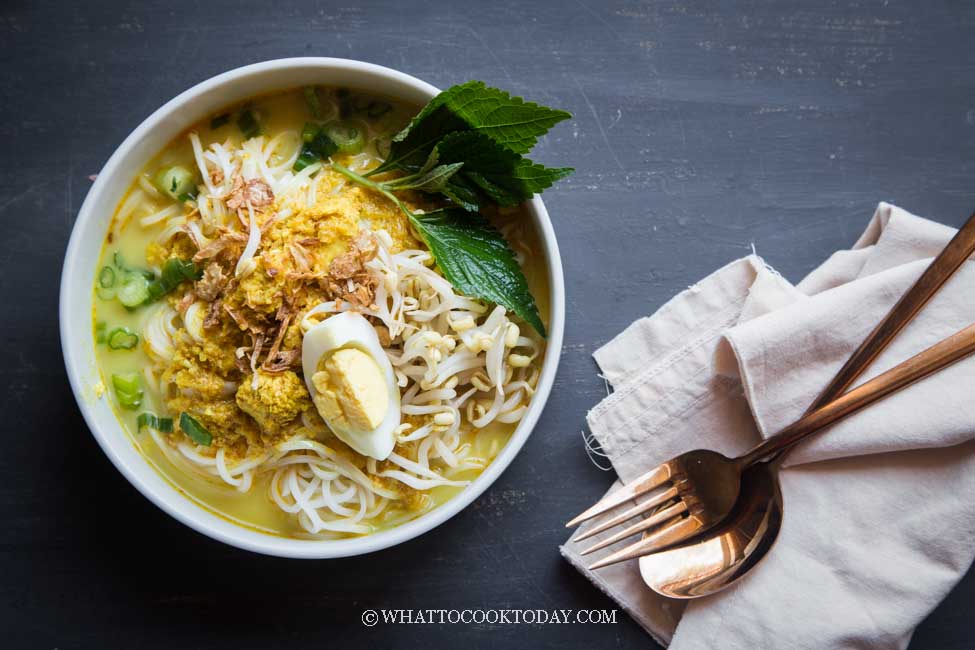

8 comments
Hi! I am working on this recipe right now actually, and I was struggling with the mackerel. Once I boiled them for 10 minutes and flaked all the flesh off, I noticed I had TONS of little bones left behind in the fish flakes. I tried to pick them all out but I must have missed some. How do you flake the fish meat off without ending up with tons of these tiny floss like bones in the meat?
Hi Katie, it could be that the mackerel had been boiled for too long. Were they smaller in size? Perhaps you may not need 10 minutes. If you are not sure, just check and see if you can easily flake the meat with a fork, if you can, it’s done cooking. The ones I used were pretty big in size. Otherwise, the meat should be easily flake off using a fork and you shouldn’t end up with lots of tiny bones in the meat.
Hi Marv, great blog!!! I have just discovered your blogs today! This page however, the recipe is a little hard to read because of the picture didn’t seem to resize. I am using IPad mini when I read this page. On the other note, maybe considering moving to Australia 😋 not as cold as Minnesota 😋 and if you like a cooler climate, Melbourne is perfect 😊 or just ask your brother? Is he still in Australia? Once again, Love your blogs 👍 and your Indonesian recipe definitely reminded me of Medan and being able to get the recipe and ingredients in English! Priceless!!
Hi Karen,
Welcome 🙂 I have “fixed” the page. The images are causing the recipe box to mess up. Can you help me check and see if it’s ok now or you still have difficulty viewing the recipe? My brother has moved to Singapore long time ago 🙂 He loves Australia for sure. I have yet to have a chance to visit, but it’s on my list for sure!
Hi Marvelina
Well, the vendor does not always have them too..they sell it for $15 per bud.
Now it’s hard to get the frozen one around Sydney too.
I normally will go to Yose Rizal for asam laksa…. 🙂 with peyek and es cendol…super yummy
oh my! $15/bud! that’s what happened when it’s “rare”. My mom said we could get a truck-load for that price in Medan ha..ha…! Now you are making me all hungry!!!
I love bunga kencong too!!!
It’s so hard to get fresh one in Sydney!
Hi Linda, at least you can get a fresh one, I can only get frozen one 🙂